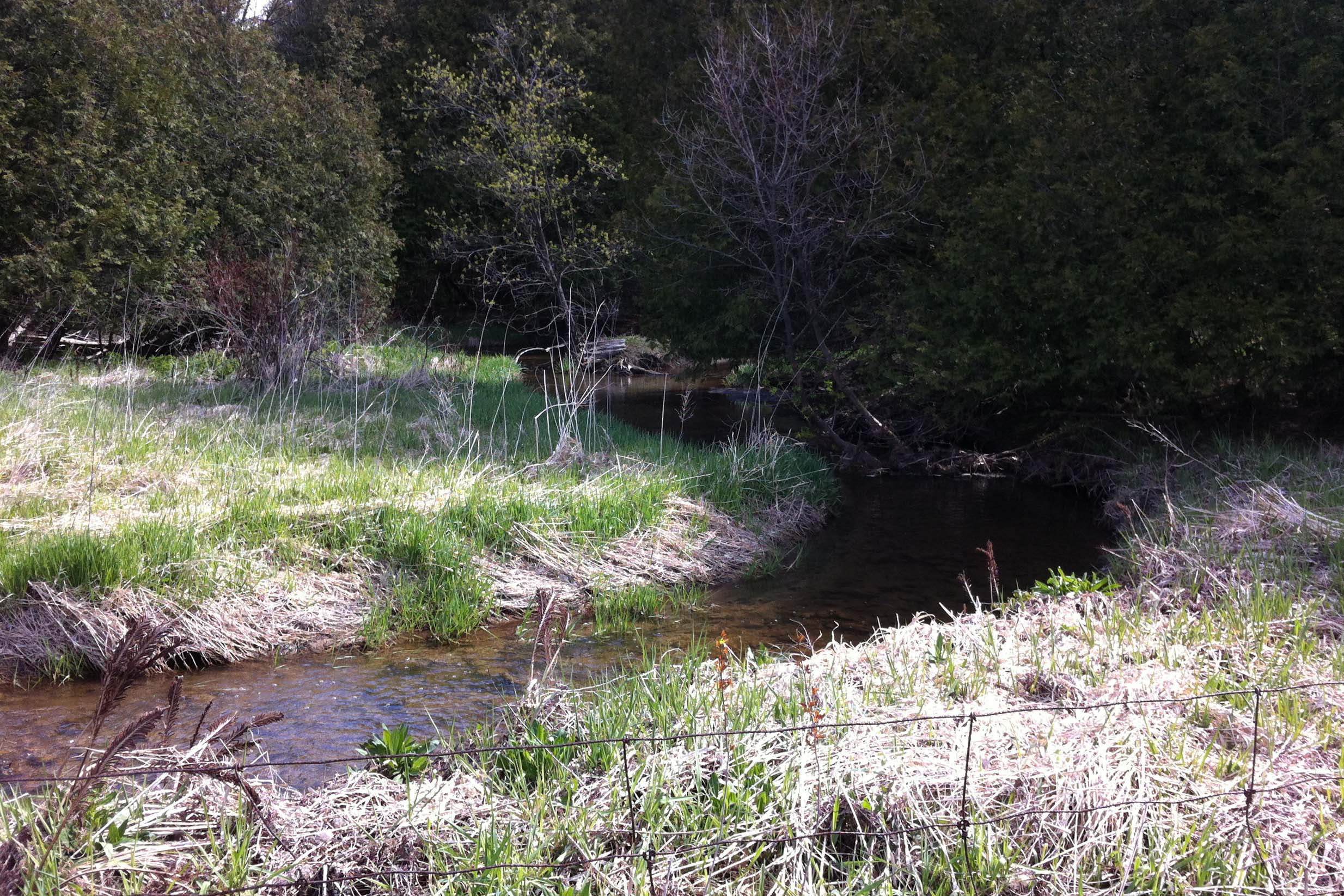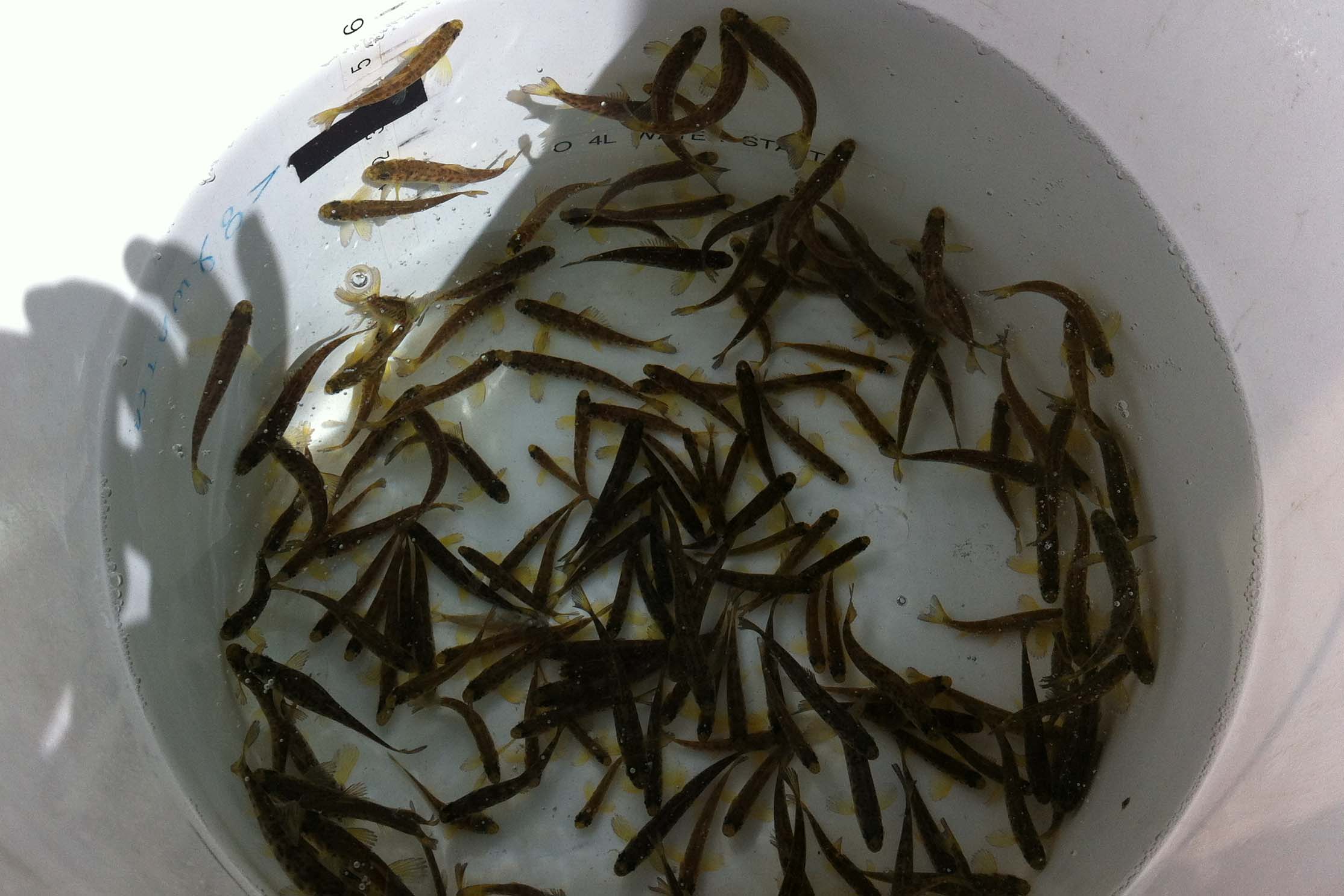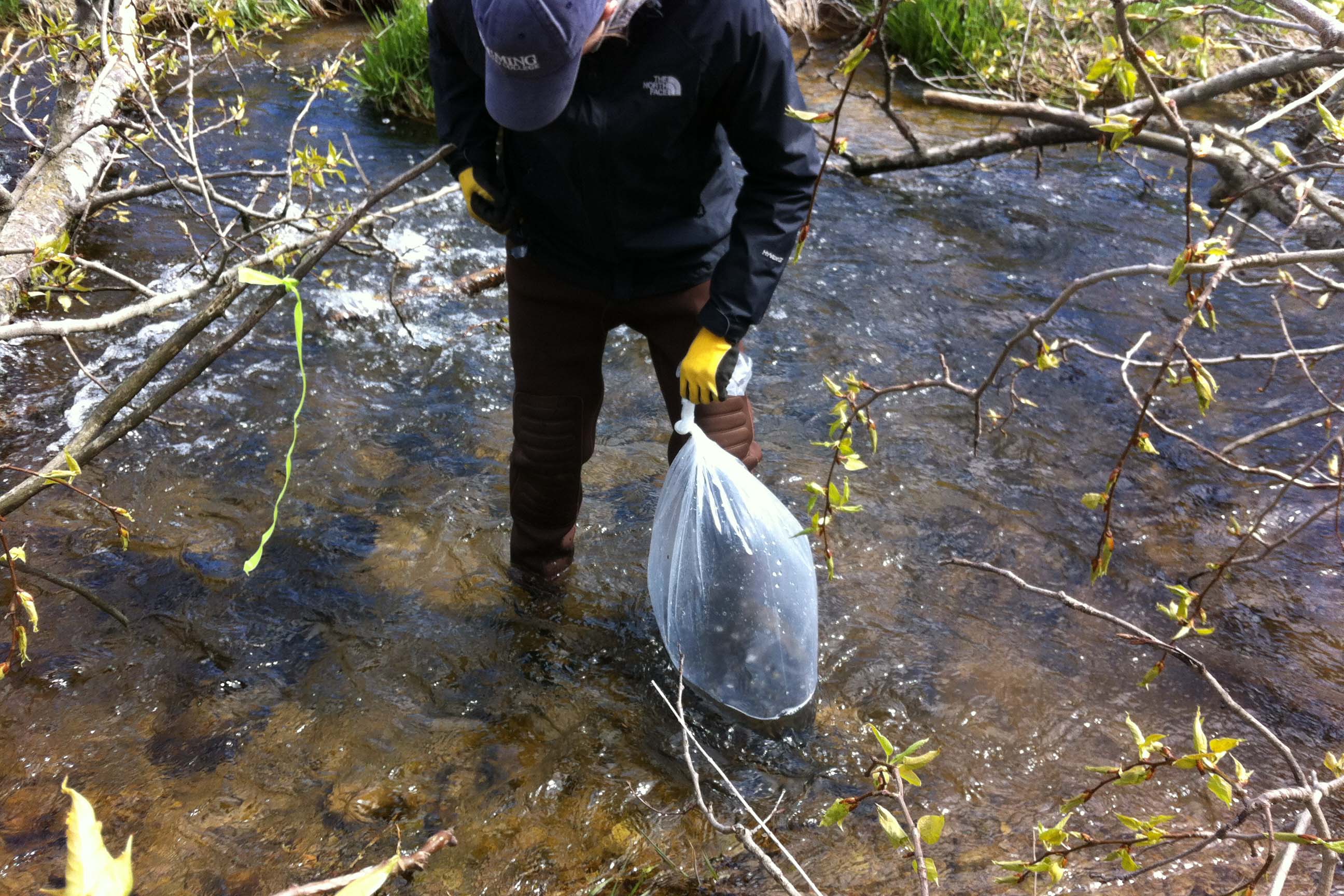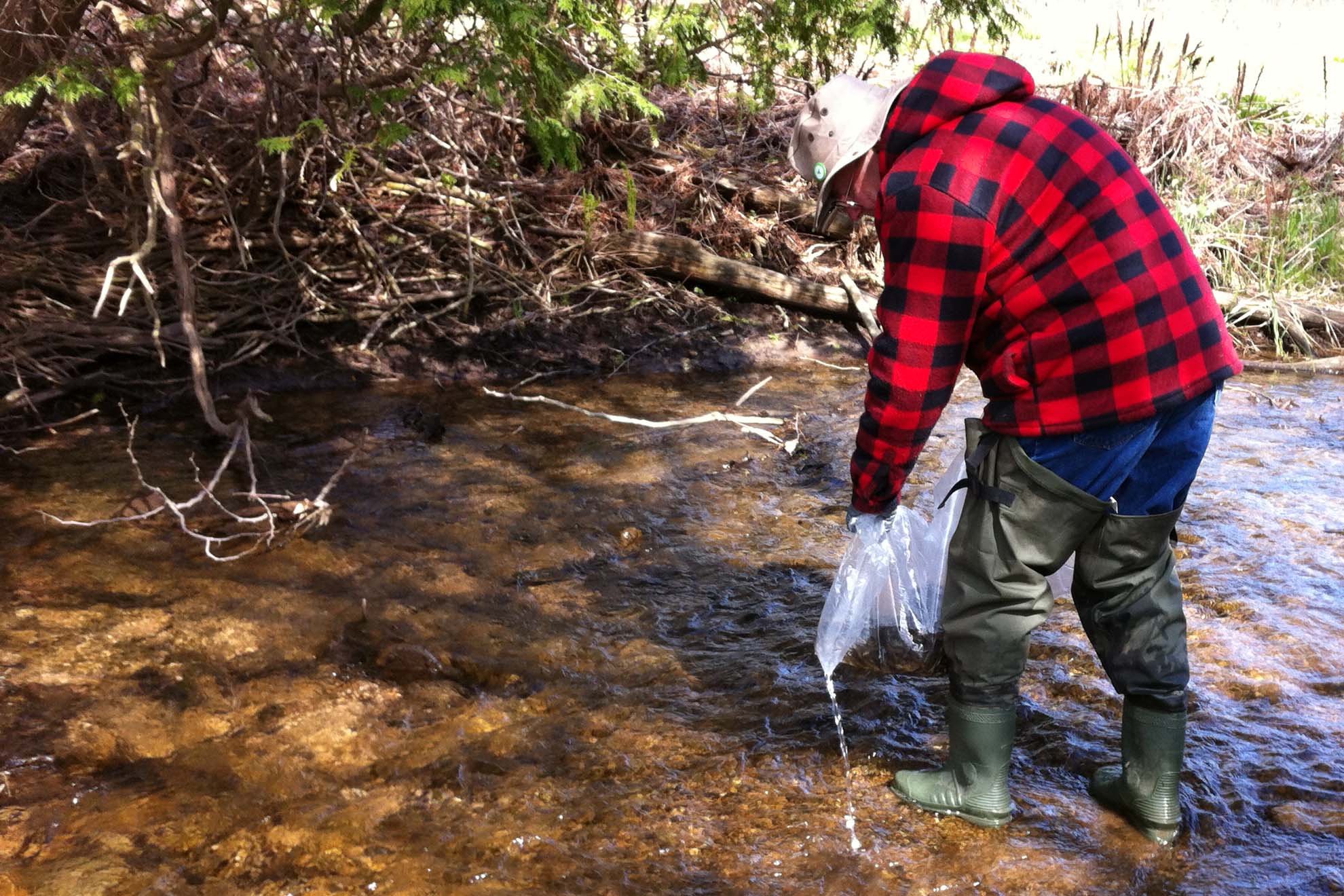The Day I Played With Baby Atlantic Salmon
Last week I had the great opportunity to help stock Atlantic salmon fry into a local river, as part of the Lake Ontario Atlantic Salmon Restoration Program.
I saw the opportunity to be part of the fish stocking program thanks to a Facebook post. I sent off an email, added my name to the list of volunteers, and was told when to show up – but I honestly had no idea what to expect. I was hoping to be able to help, even though I knew nothing of the process.
One of the great things about helping out at an event like this is that everyone you meet is friendly and eager to share information. I find I learn more than I could have hoped for, and I get to spend time talking fish and fishing with like-minded people.
After the initial meet-and-greet, the plan for the morning was outlined to me. We would have around 33,000 Atlantic salmon fry to stock within a designated stretch of the river. Stocking stations would be selected in parts of the river with suitable habitat – usually an area with a good riffle – and they would be marked with a flag. We would start downstream and work our way up to the next station to avoid walking over the area we just stocked. Each station would be stocked with roughly 1,400 fish.
The obvious next question is how do they separate 1,400 fish from 33,000? Now, I was the only person there that hadn’t participated in a fish stocking before, but I really didn’t want to have to ask the question. No problem, our fantastic leader, Aaron, explained the method to me. For a very basic explanation, picture a regular old white bucket, something like what you would use for ice fishing. Inside this bucket are marks to indicate the amount of water. You put in a certain amount of water, then knowing approximately how much 1,400 fish weigh, you can work out what volume you need in the bucket. So, water to the line + fish to the line = correct amount of fish.
Once the fish were measured out, they were put into a clear plastic bag. The bag was filled with oxygen and taped off, ready for transport to water.
At the water it was time to open the bag and release the fish. This isn’t a case of just dumping the bag out – rather you need to gradually empty the bag across the span of the river, getting the fish out into the widest area possible. One major downside I noticed with the bag is that you usually end up with a straggler that doesn’t seem to be ready for big water life and refuses to exit the bag. It requires a little more effort to get rid of those ones.
It was wonderful to see these tiny Atlantic salmon hitting the water and dispersing. Give them a few seconds and you would never know you had just released fish in the area, they were gone.
We moved on from station to station, and I got to release more than a few bags which was such a thrill. I cannot thank everyone there enough for letting me help out. I wasn’t just a bystander, I actually got to participate. The morning ended far too quickly.
While the season on inland Atlantic salmon is always closed, I have had more than a few incidental catches of these wickedly crazy fish. They jump and fight and are just bundles of energy that keep me entertained all day long. I have yet to hook into on Atlantic out on Lake Ontario, but from what I’ve heard, they put on a show and give you a good fight. I hope I hook into one soon!
It’s incredible to think that these once abundant fish were wiped out in Ontario. For a fish that is part of our natural heritage, it was a travesty that they disappeared. However, thanks to the efforts of the Ontario Federation of Anglers and Hunters (OFAH), and the Ontario Ministry of Natural Resources (OMNR), as well as many other partners, the fish are being re-introduced in an effort to restore a self-sustaining Atlantic Salmon population in Lake Ontario and its tributaries.
There are so many ways to help out and be involved in this program. From the classroom hatchery to adopting an Atlantic to fish stocking and habitat restoration events, there’s an activity for everyone. This program is about restoring Atlantic salmon, but it does so much more. It is responsible for a massive stream rehabilitation effort, which benefits everyone, not just anglers on Lake Ontario, and not just those that are looking to help Atlantic salmon. Improved habitat benefits all fish and the ecosystem. It also gets people involved in conservation, it gets them outdoors, and it educates.
As for me? Fish stocking was one of the coolest things I’ve been able to participate it. Those of you who get to do this on a regular basis have one heck of an awesome job. I’m happy to know that I was able to participate, in some small way, and maybe one day, even though I won’t know, I’ll be able to catch one of those little fish I released when it makes its way to the lake. That would be pretty amazing.






